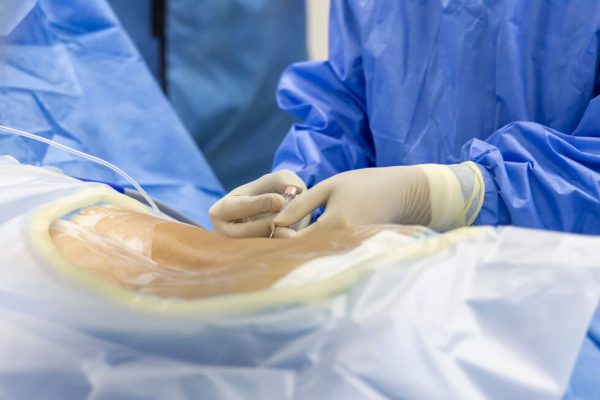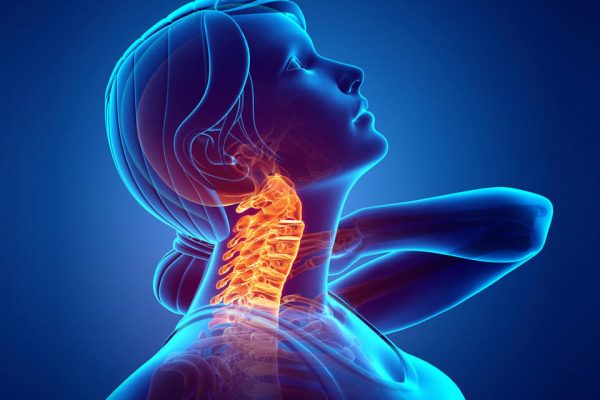Microdiscectomies for Cervical and Lumbar Discs

Cervical Microdiscectomy in iran
There is no difference in a lumbar procedure. The cervical microdiscectomy is performed under general anesthesia. The spine surgeon uses tubular dilators to gently create space through the muscles of the neck. Then, he/she will remove a small portion of the lamina and facet joint (laminoforaminotomy) to expose the herniated disc and the compromised nerve. Through microsurgical tools, the surgeon will then remove the portion of the disc that compresses the nerve. The cervical nerves are responsible for the sensation and movement of the shoulders, arms, forearm, and hands.
Cervical degenerative disc disease occurs due to the wear and tear of the intervertebral discs in the cervical spine. The degeneration may lead to prolapse of the inner nucleus pulposus through the outer annulus ring. The intervertebral disc may also prolapse/herniate as a result of traumatic injury.
The compression of nerve roots may lead to inflammation and irritation at the involved segment. Patients with cervical radiculopathy frequently complain of neck pain that radiates down the shoulder into the arm and hand. There may be weakness or clumsiness of the hands and patients may report dropping objects or not being able to make a firm grip. Patients may also complain of numbness and tingling sensation in parts of the upper extremities.
The diagnosis of cervical radiculopathy is established by a detailed physical examination by a spine surgeon and followed by imaging studies. Imaging or radiological studies may be done in the form of x-rays, CT scans, and MRIs. Electromyography and nerve conduction tests may sometimes be done to differentiate cervical radiculopathy from peripheral neuropathy.

When is a Microdiscectomy Used to Treat Back Pain?
A microdiscectomy may be necessary if a herniated disc in the lower back is causing weakness, pain, or tingling in the back and in a leg. Typically, a microdiscectomy is performed for two reasons:
-
A fragment of an intervertebral disc may have broken away from the disc, and is pressing on the spinal cord or spinal nerves.
-
The disc may still be intact, but a part of it is bulging (protruding) and pressing on spinal nerves or the spinal cord.
A microdiscectomy for back pain resulting from a herniated disc can provide many people relief from pain and other symptoms. However, it doesn’t work for everyone. There is a small chance the procedure will not reduce the amount of pain, or there may be temporary relief and then the pain returns. In about 5% of cases, the disc will herniate again.
Frequently Asked Questions about Microdiscectomies for cervical and lumbar Discs in iran
- How Long After Micro Lumbar Discectomy Can I Sit?
Sitting is limited to 20 minutes at a time for the first two weeks after micro lumbar discectomy. This is raised to 40 minutes in four weeks. You should return to bed or go for a short walk if you begin to feel uncomfortable. Periods of sitting can be repeated many times a day with a rest lying down in between for 25 to 55 minutes.
- What Happens If I Bend After Micro Lumbar Discectomy?
Even if you have a less invasive micro lumbar discectomy, if you begin bending too soon after surgery, you may overstress or overstimulate nearby muscles. Doing so could result in inflammation, which may irritate spinal nerves enough to cause some pain.
- Is It Normal To Still Have Sciatica After Micro Lumbar Discectomy?
Only a minority of patients experience complete relief of sciatica from the time of the operation. Most patients detect that it is much improved but there is still some aching in the leg because the nerve has a “memory” for the pain and stays slightly irritable. This generally resolves within a matter of weeks.
- How Long Does It Take Nerves To Heal After Micro Lumbar Discectomy?
Generally, it can take anywhere from several months to a full year after a micro lumbar discectomy for numbness, tingling sensations, and general weakness to entirely go away. While not common, a nerve that was compressed prior to having a micro lumbar discectomy may not fully recover.
- What are the differences between anterior and posterior cervical discectomy?
Anterior cervical discectomy involves an incision in the front of the neck and allows for better visibility and access to the disc. Posterior cervical discectomy involves an incision in the back of the neck and provides access mainly to the side of the spinal cord.
- What is the recovery time after cervical microdiscectomy?
Recovery time varies, but most patients can return to normal activities within a few weeks to a few months, depending on the extent of the surgery and individual healing rates.
- How effective is cervical microdiscectomy in relieving symptoms?
Cervical microdiscectomy is generally highly effective in relieving symptoms of cervical radiculopathy, with a high success rate.
- Can cervical microdiscectomy be performed using minimally invasive techniques?
Yes, cervical microdiscectomy can be performed using minimally invasive techniques with the help of an endoscope, resulting in smaller incisions and potentially quicker recovery.
- What causes cervical degenerative disc disease?
Cervical degenerative disc disease is caused by the wear and tear of intervertebral discs due to aging or trauma.
- How should a patient prepare for cervical microdiscectomy?
Preparation includes preoperative imaging, physical examination, discussion of medical history, and potentially stopping certain medications as advised by the surgeon. Patients should also arrange for post-surgery support and follow specific instructions given by their healthcare provider.
